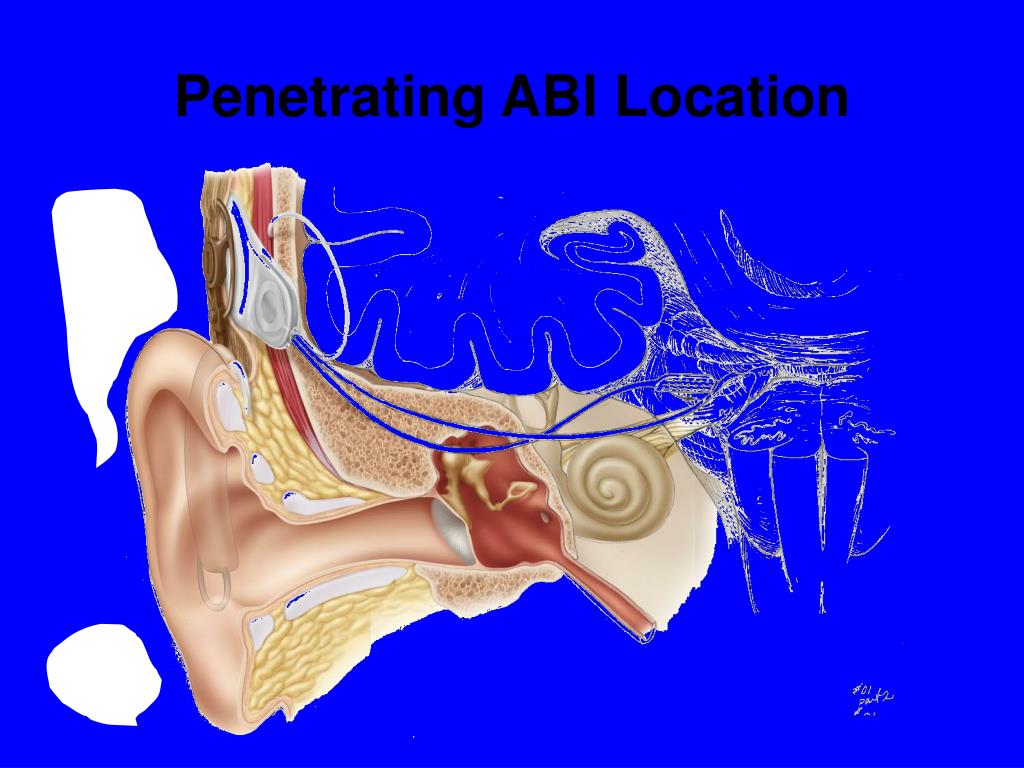

“It was magical,” said Sophie Gareau, the child’s mother. On June 12, six weeks after surgery at CHLA, the device was activated with positive results at the Department of Otolaryngology – Head & Neck Surgery clinic at Keck Medicine of USC.
AUDITORY BRAINSTEM IMPLANT TRIAL
Food and Drug Administration-approved trial supported by a National Institutes of Health clinical trial grant. Generally we start working with these patients through play, since it is necessary for them to lose their fear of the new sound stimulus.A Los Angeles team of scientists and surgeons from Keck Medicine of USC, Children’s Hospital Los Angeles and Huntington Medical Research Institutes (HMRI) reported that sound registered in the brain of a deaf Canadian boyfor the first time after doctors activated a hearing device that had been surgically implanted in his brainstem.Īuguste Majkowski, 3, is the first child in the United States to undergo an auditory brainstem implant (ABI) surgery in a U.S. The speech therapy team has subsequently coordinated with the team that will treat Benjamín in his country of origin to inform them of his progress, which has been favourable so far. The Otorhinolaryngology Service has worked on the case jointly with the Educational Resources Centre for the Hearing Impaired ( CREDA), to offer monitoring and speech therapy training for almost 6 months. Once the implant is activated, it is regulated according to the progress of the child, and the auditory nucleus and central auditory system are directly stimulated . “In these cases, activation can be annoying for the child the first few times, since they have not consciously heard or perceived sounds before, and sometimes they can be frightened,” explains speech therapist Natalia Coll. The combined neurosurgery and otorhinolaryngology intervention was carried out successfully on Benjamín in December 2018 and subsequently the implant had to be activated to check it was functioning correctly. “This neurosurgery is more complex in the anatomy of children, but it allows them to become accustomed to the auditory stimulus, something that is not so meaningful when a deaf person reaches adult life.” The speech therapy intervention is essential in brainstem implants “It is not a new technique, but it is not widespread in pediatrics,” Hinojosa explains, adding that in Spain only four centres offer brainstem implantation. Until two years ago, it was difficult to perform this type of technique, which can now be offered thanks to the experience of the Otorhinolaryngology Service and collaboration with the Neurosurgery Service, specifically by José Hinojosa, expert in brainstem access. Since 2006, only four patients have been treated with the brainstem implant at Sant Joan de Déu Hospital, while about 50 patients with cochlear implants can be treated annually. Precisely because it is a more invasive intervention than the cochlear implant means that it is only used in cases where the first option is ruled out, which are usually the most severe. This technique prevents patients from growing totally isolated from their environment, perceiving and recognising sounds in more advanced stages of recovery, and even speaking and understanding oral language with the help of lip reading.


 0 kommentar(er)
0 kommentar(er)
